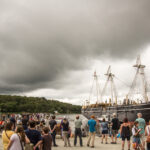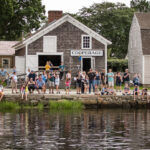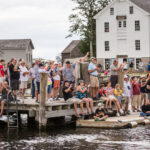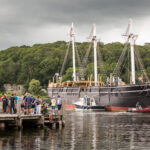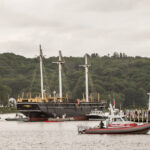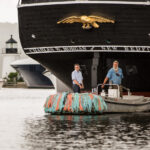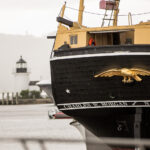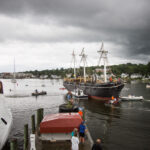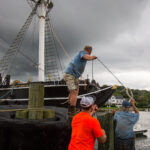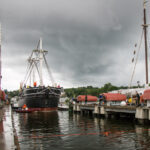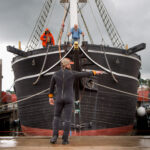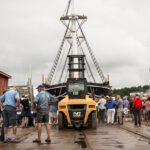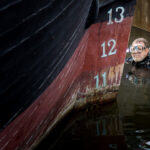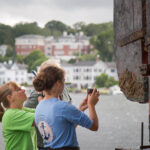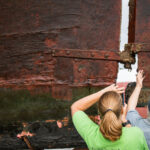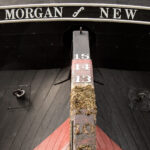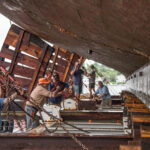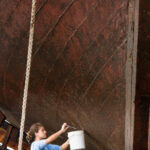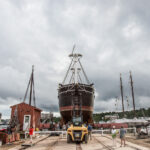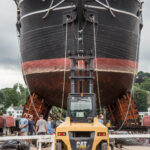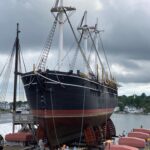Mystic Seaport Museum announced the appointment of Chris Sanders as the new director of the Henry B. duPont Preservation Shipyard. Sanders succeeds longtime director Quentin Snediker, who will stay on at the Museum in his role as the Clark Senior Curator for Watercraft.
“Chris brings a wealth of ship and boatbuilding experience to the leadership of the duPont Preservation Shipyard. He has proven his knowledge and skill during the Mayflower II restoration project and many others since he started here, and I am excited to appoint him to this new position,” said Peter Armstrong, president of Mystic Seaport Museum.
Sanders is a native of Connecticut and attended the University of North Carolina, where he studied physics and psychology before he began his career in wooden boat restoration and construction. He is a graduate of the apprentice program at the Chesapeake Bay Maritime Museum as well as the International Yacht Restoration School in Newport, Rhode Island. Since his graduation, he has worked on restoration projects in six states, including several years in both Northern and Southern California. He ran his own boat restoration shop in San Diego for several years before deciding to return to New England. He returned with his family to Connecticut to work on the Mayflower II restoration at Mystic Seaport Museum. He has served as the lead shipwright in the duPont Preservation Shipyard for the last two years, and lives with his wife, Dr. Megan McCarthy Sanders, and daughter Vann in North Stonington.
The appointment is effective immediately.
As the Clark Senior Curator for Watercraft, Snediker is responsible for providing direction and leadership in the preservation and development of the Museum’s watercraft collection, which presently numbers more than 500 vessels of all sizes, ranging from small rowboats and kayaks to four National Historic Landmarks, including the 1841 whaleship Charles W. Morgan. Under Snediker’s leadership, the shipyard completed large-scale restorations on the Charles W. Morgan, the Mayflower II, the fishing vessel Roann, and the steamboat Sabino. He led the construction of the schooner Amistad, which was launched in 2000, and he managed the completion of significant maintenance work on the rest of the Museum’s fleet during his tenure in the position.


